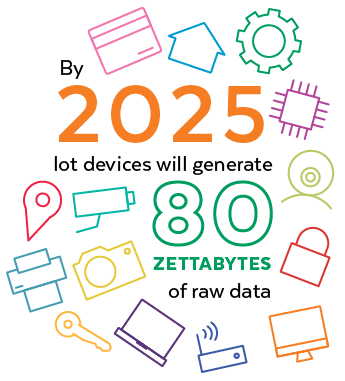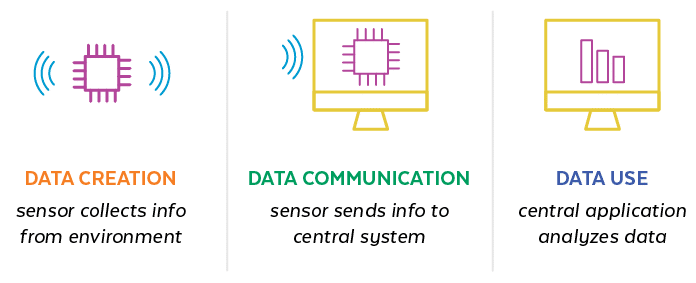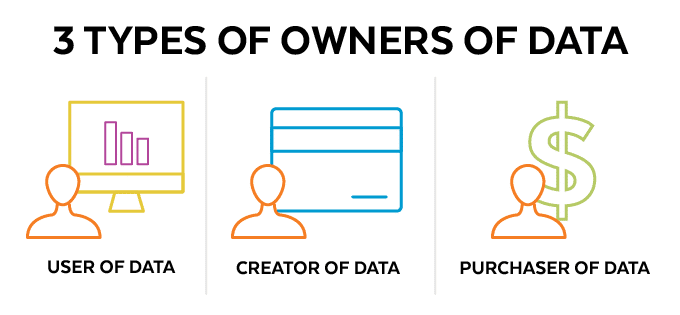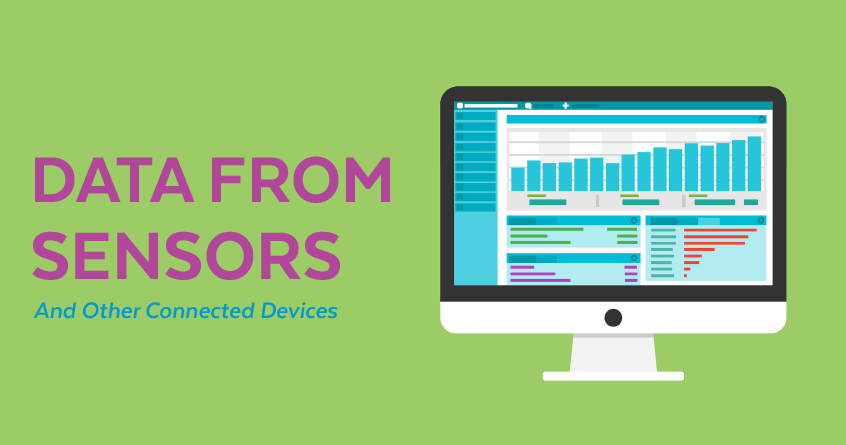It’s impossible to discuss the present and future of digital transformation without at least considering the Internet of Things (IoT). Connected devices are already playing a huge role in how companies manage everything from their daily operations to strategic analysis. Those connected devices, of course, rely on sensors. And data from sensors is what makes the entire system work.
Sensors detect changes in the local environment and collect that data for analysis and adjustment. Think smart buildings, which use sensors to understand current occupancy at any point in time and adjust variables like lighting and temperature accordingly. 
Of course, we won’t just be talking about sensors today. Instead, it’s the data from these sensors that requires further discussion. ERP Today estimates that by 2025, IoT devices alone will generate 80 zettabytes1 of raw data.
And the consequence of this increase? If you want to build an IoT network, you have to know how that data is collected and stored within the network. This is really the only way to develop solutions that can manage, analyze, and benefit from increasingly massive amounts of streaming data. That’s why, in the following article, we’ll focus on understanding exactly where data goes once it leaves a sensor. And, who owns it. Most importantly, we’ll also discuss what all this means for your business.
Where Does Sensor Data Go?
As outlined in Philip B. Gibbons’ Encyclopedia of Data, sensors can treat incoming information in one of three ways:
“Sensor data can either be stored locally to the sensor node that collected the data (local storage), transmitted to one or more collection points outside of the sensor network (external storage), or transmitted and stored at other nodes in the sensor network (in-network storage).”
Choosing between these options depends on the volume of the incoming information to be stored as well as the limitations of the sensor on which it could potentially be stored.
In the IoT context, of course, the first consideration is connectivity. Because sensors are connected to a larger network, chances are they’ll send the data to that larger network. The answer then is simple—the bulk of the raw data from sensors gets sent to and stored in the cloud.
The most common way to consider the way data gets used in an IoT network is to break it up into three stages:
- Data creation occurs each time the sensor collects information from its environment.
- Data communication occurs as the sensor sends the data to a central system that collects and organizes it.
- Data use occurs as the central application analyzes the data (or sends it for analysis) and acts on it.
 This “central application” is the database that sits at the hub of the network. The database relies on a consistent communication protocol (like MQTT, HTTP, or CoAP), along with principles set by Time-Sensitive Networking standards, to streamline the data flow and make it more usable for analysis and action.
This “central application” is the database that sits at the hub of the network. The database relies on a consistent communication protocol (like MQTT, HTTP, or CoAP), along with principles set by Time-Sensitive Networking standards, to streamline the data flow and make it more usable for analysis and action.
Do Sensors Store Data Internally?
Sensors in IoT infrastructures are typically designed for intentionally limited use. Their goal is to collect data and send it into the larger network. Typically, this is the sole function of sensors. As a result, sensor nodes have limited capacity to compute the data, requiring close integration with the cloud in order to store and process it.
Put differently, IoT sensors are specifically not designed to store data internally. Their goal is to pass that information on as quickly as possible, leaving storage to a more centralized application or database.
The question then becomes, how can we build databases designed to optimize the data and information fed to them from the greater sensor network?
There are two standard models constructed around the storage and processing of sensory data. Each of these models assumes the sensors are regularly sending data to a cloud network for further analysis and access by client devices.
- Storage and processing of data outside the sensor network: This model works especially well with already-established databases that new sensors would feed into. This setup can become problematic when the data from the sensors increase in either volume or speed of transmission.
- Distributed storage and processing within the sensor network: Here, the network itself becomes a distributed database, with individual nodes storing their data locally. This solution can be more efficient because the need for transmission decreases, increasing volume and speed capabilities in the process.
The second model comes closer to answering the question posed above. While individual sensors still do not store their data centrally, they act more as a waystation of sorts that partially processes the data before sending it onto a more centralized cloud system.
Who Owns the Data from Sensors?
Data generated from IoT sensors is machine-generated, which can bring their ownership of that data into question. When the entire network is owned by the same entity, ownership becomes clear. But when devices are leased rather than owned, we have 3 potential owners depending on the viewpoint:
- The user of the data: Each time a set of data is copied or transmitted, control of that data goes along with it.
- The creator of the database: Because individual sensors do not hold data, the argument could be made that the central storage for those sensors is the rightful owner of the information collected.
- The purchaser of the data: Especially for data generated on behalf of someone else, information could be purchased specifically to build further applications from it.
 The situation only increases in complexity when the IoT value chain includes multiple participants and stakeholders. Consider, for example, smart cities that gather data. A smart city would gather data related to waste management, traffic, pollution, temperature, and more. It would be impossible to designate a single owner for all that data.
The situation only increases in complexity when the IoT value chain includes multiple participants and stakeholders. Consider, for example, smart cities that gather data. A smart city would gather data related to waste management, traffic, pollution, temperature, and more. It would be impossible to designate a single owner for all that data.
Ultimately, the easiest argument to make is that the entity most responsible for generating the data holds at least initial ownership rights. Still, the question of ownership remains relevant and important as IoT and data from sensors become a more ubiquitous part of daily business operations.
In Summary
A full discussion of IoT networks is impossible without also considering what happens with the data individual sensors collect. Because sensors do not hold onto their data, ownership becomes an especially relevant question to consider. This is an important variable to consider for any organization looking to implement IoT networks in their own environments.
Of course, it all begins with finding the right technology to build the network. That’s where Versa Technology comes in. Our PoE equipment can become the heartbeat of a reliable IoT infrastructure, thanks to an expansive product portfolio that can deliver last-minute networking solutions to a global community.
Learn more on our website and contact us to get the products you need to succeed in creating reliable, fast, and secure high-speed networks.
………….
Source

